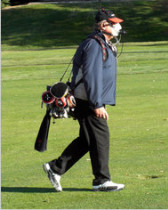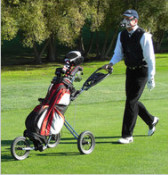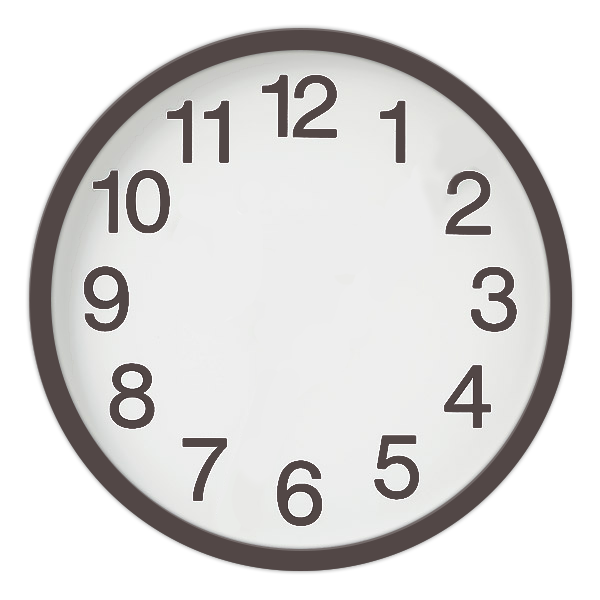Coming Soon...
OKSomething went wrong!
Please try again later.
By BILL PENNINGTON
Neil Wolkodoff bought $27,000 worth of equipment, which took about two hours to put on and take off, to conduct tests on amateur golfers.
Ever wonder if you play better golf riding in a cart or walking? Ever wonder how many calories you burn in a typical round? Or if you would play better if you were in better shape? Ever wonder if golf is truly a sport?
 Neil Wolkodoff wondered all those things, too. And as the director of the Center for Health and Sport Science at the Rose Medical Center in Denver, he knew how to find the answers. Two years ago, he bought $27,000 worth of equipment to conduct a painstaking set of tests on amateur golfers. When he was done, he had some findings that could settle a lot of barroom arguments.
Neil Wolkodoff wondered all those things, too. And as the director of the Center for Health and Sport Science at the Rose Medical Center in Denver, he knew how to find the answers. Two years ago, he bought $27,000 worth of equipment to conduct a painstaking set of tests on amateur golfers. When he was done, he had some findings that could settle a lot of barroom arguments.
For example, in Wolkodoff’s study, golfers scored lower while walking with a caddie or with their clubs on a push cart than they did when using a motorized cart. And golfers carrying a golf bag posted the highest average score.
As one might expect, the most energy was expended while walking with a bag (721 calories burned for nine holes). But walking with a push cart was not far behind (718). Walking with a caddie burned 621 calories for nine holes, and riding in a cart still burned 411 calories on average.
"One of the surprise realizations was that just swinging a golf club about 100 times uses up a significant amount of energy," Wolkodoff said.
Each of the golfers went through rigorous testing before the study to establish their aerobic endurance and anaerobic threshold levels — the point when lactic acid buildup generally begins to impair coordination and concentration. This became important because Wolkodoff could watch readouts from six pounds of sensors strapped to the golfers and identify when they had gone beyond their fitness level.
The study showed that being in shape physically can help a golfer’s game.
What Wolkodoff discovered was that exceeding one’s anaerobic threshold usually went hand in hand with ineffective golf. Think, for example, of someone walking up a steep hill and then having to execute a delicate chip without the two-minute recovery period needed to restore heart and respiratory rates to normal.
So being fit cuts strokes.
 "If you’re out of shape, exceeding your threshold could happen a few times every round, even while riding in a cart, because tee boxes and green complexes are often elevated," Wolkodoff said. "Your golf game will suffer. Somebody with the yips might just be a little winded after walking up to the green. At the same time, being in better physical condition would make you better mechanically and mentally."
"If you’re out of shape, exceeding your threshold could happen a few times every round, even while riding in a cart, because tee boxes and green complexes are often elevated," Wolkodoff said. "Your golf game will suffer. Somebody with the yips might just be a little winded after walking up to the green. At the same time, being in better physical condition would make you better mechanically and mentally."
Finally, is golf a sport rather than a game?
"There are a lot of ways to define a sport," Wolkodoff said. "But we know that the golf swing uses almost every muscle group in the body. We know it uses a pretty significant amount of energy — not as much as running a 10K but more than people think. And one significant measure of a sport is whether physical training improves your ability to perform, and I think that’s been proven in golf.
"So in my estimation, it’s absolutely a sport."
Wolkodoff’s study, which may be the first of its kind, had its limits. Because the equipment was cumbersome, expensive and took about two hours to put on and take off, his test group was just eight golfers. They were men ranging in age from 26 to 62 and had handicaps from 2 to 17. Each played the front nine at a championship-quality Denver-area course four times on different days — walking with a push cart, walking with a caddie, walking and carrying their golf bag, and riding in a golf cart.
Weather conditions were similar each day. The golfers were required, as much as was possible, to approach the nine holes the same way each time. In other words, if they had hit driver off the first tee in their first round, they had to hit driver again on the first hole of their final three rounds. The sequencing of how they played the rounds was varied; not everyone played with a golf cart first, then with a caddie and so on.
The golfers’ results during the four rounds tracked similarly with consistent statistical trends. For example, seven of the eight golfers reported the same scoring pattern: lowest while playing with a pushcart (group average was a five-over-par 40 for nine holes), followed by playing with a caddie (42), playing in a motor cart (43) and playing while carrying their bag (45). Wolkodoff received no commercial sponsorship or financing for the study other than from the Rose Medical Center. He donated his time, which amounted to about 500 hours.
"It’s not a perfect study, but I think we discovered some things," Wolkodoff said. "You throw the findings out there and let people take their potshots at them, which is fine. I would like to see someone do a follow-up study. But if it hasn’t been done before, it’s because of all the time, equipment and data involved."
In fact, representatives at the P.G.A. of America, the United States Golf Association and the National Golf Foundation said they were not aware of studies exactly like Wolkodoff’s. A recent University of Pittsburgh study measured one golfer’s caloric expenditure as he walked with a bag, walked with a caddie and rode in a cart. That study put the number of calories burned at higher rates than Wolkodoff’s study — about 1,000 calories for nine holes of walking and carrying, 750 for walking with a caddie and 650 for riding in a cart. A Swedish study two years ago concluded that golfers there lived five years longer than nongolfers. But nearly all golfers in Sweden walk while playing.
"The health benefits of walking was the best news of our study," said Wolkodoff, adding that the complete results could be found on his center’s Web site, rosechss.com. "Playing 18 holes of golf while pushing a cart twice a week shouldn’t replace an overall fitness regimen, but it could be a very worthy supplement."
But on many golf courses, it isn’t possible to walk because golf courses promote the use of carts to raise their revenue.
 "There are positives to golf being helpful to people’s health and wellness," Greg Nathan, the senior vice president for membership at the National Golf Foundation, said when discussing Wolkodoff’s study. "But there can be an opposite effect. The renting of golf carts is important to the health and welfare of the golf industry."
"There are positives to golf being helpful to people’s health and wellness," Greg Nathan, the senior vice president for membership at the National Golf Foundation, said when discussing Wolkodoff’s study. "But there can be an opposite effect. The renting of golf carts is important to the health and welfare of the golf industry."
Add to that the perception that cart use speeds play, a myth that has been debunked by several studies but a myth that persists nonetheless. Some golf courses are also designed with long distances between some tees. And, of course, some people cannot walk the golf course for various physical reasons. Still, spreading the word that walking while playing will yield significant health benefits could help the game grow.
"I don’t just play golf to lose money to my sandbagging friends," you could tell your spouse. "I do it for both of us because I want to stay in shape."
It would be true, and it would apparently help your score and perhaps your wallet.
In the end, I think Wolkodoff and his many microchips have just scratched the surface. I’ve got plenty of other 19th-hole arguments he could settle: Do golfers usually play better alone or in a group? Do they usually play better in the morning or the evening? Better on the front nine or the back nine?
It’s not my research money, but I think we’re just getting started.






